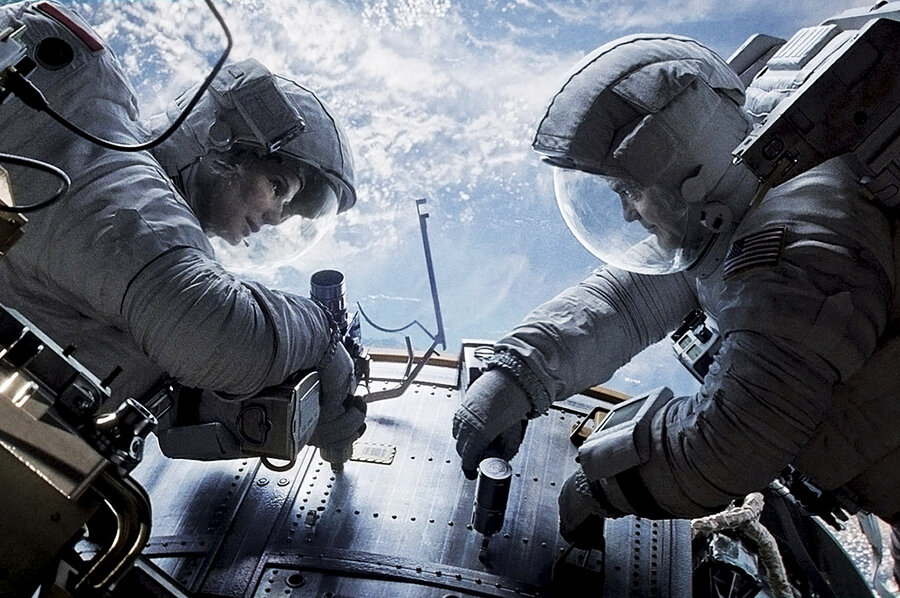'Gravity' goes galactic with effects
Loading...
There has rarely been a more entrancingly eerie opening scene than the one that graces “Gravity,” the new space epic starring George Clooney and Sandra Bullock as NASA astronauts who suddenly find themselves unmoored 370 miles above Earth.
The first image is a long shot of Earth as a space shuttle eventually makes its way into the frame, ending up in a close shot. Alfonso Cuarón, filming in 3-D, captures in a single, unbroken take the immensity and deafening soundlessness of space, the slow sweep of orbital motion, the power of blackness. It’s a tour de force sequence to rank alongside anything in “2001,” a film this one clearly references.
But “2001” was ultimately a messianic movie about intergalactic imponderables. “Gravity” is far less pretentious, which is both good and bad. It’s nice for a change to see a space movie that isn’t all hyped up about God and Man and What’s Out There.
The accident that sets “Gravity” in motion is much more mundane. Shards of metal debris from an exploding Russian satellite collide with the Explorer shuttle, whose astronauts have been sent up to repair the Hubble Space Telescope. The only survivors are Bullock’s Ryan Stone, the medical engineer, and Clooney’s Matt Kowalsky, a veteran shuttle commander on the final run of his career.
Cuarón and his cinematographer, Emmanuel Lubezki, keep the audience in weightless suspension right along with the astronauts. For most of us, “Gravity” is the closest we will ever get to the real deal. Cuarón is more than a technologist; he has a genuinely poetic feeling for the ways in which motion carries through space.
I only wish the film’s screenplay, co-written by Alfonso Cuarón and Jonas Cuarón, were not so weightless. Granted, it’s tough to come up with anything for these characters to say that, given the immensity of the universe, won’t sound clunky. Still, Matt, who looks like Buzz Lightyear and never met a wisecrack he didn’t like, is a bit much. Perhaps the point is that even the vastness of space is a yawn for people who spend their lives floating through it. If so, that’s pretty depressing.
Ryan is given a back story about the loss of her daughter that feels soap-opera-ish in the extreme. Isn’t it enough that she is running out of oxygen and desperately trying to make her way to the International Space Station in time? Cuarón underestimates our empathy for her predicament. This disconnect between the grandeur of the visuals and the ordinariness of the dialogue is a common problem with science-fiction films. Actually, very little in “Gravity” can technically be called “fiction,” notwithstanding the fact that, as several scientists have already pointed out, the Hubble and the space station operate in entirely different orbits.
I almost wish Cuarón had cast nonactors, or unknown actors, in the lead roles. It’s jarring having movie stars work up their Hollywood histrionics against such a glorious backdrop. None of these arguments should dissuade you from seeing “Gravity,” if only because what’s good about it is so much better than what’s bad. Visually, if not imaginatively, it sends you soaring. Grade: B+ (Rated PG-13 for intense perilous sequences, some disturbing images, and brief strong language.)







